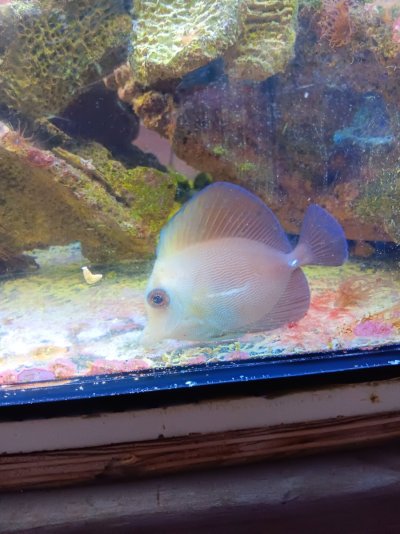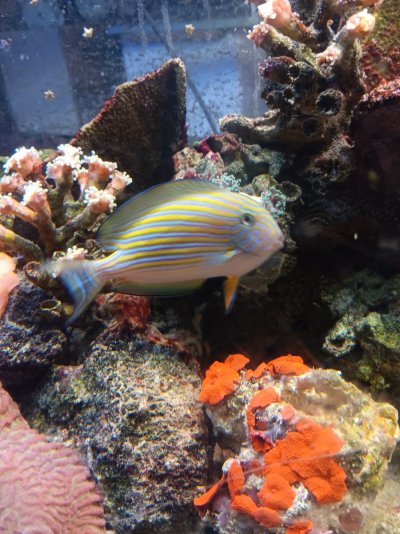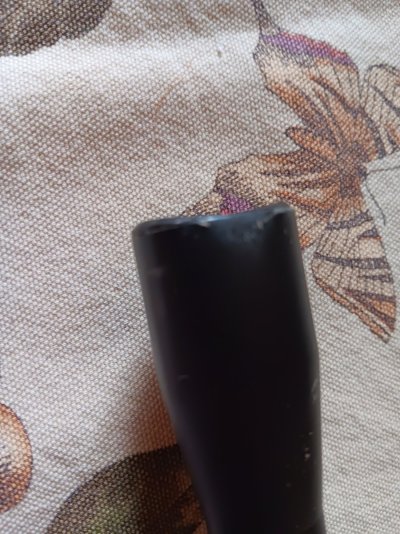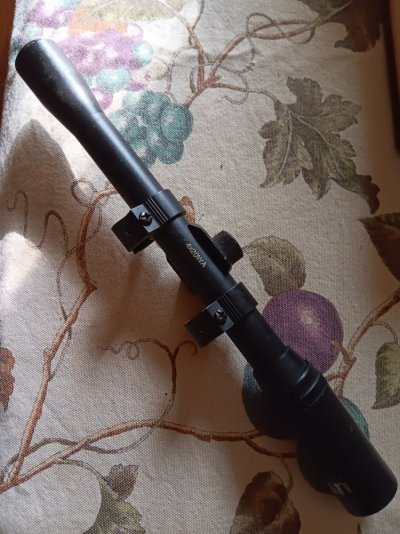Thank you. So I went and grabbed the bottle-OVERDOSING
A clearly visible sign of an iodine overdose is the increased growth of various algae in the system. Algae take up iodate and convert it into organic iodine and/or iodide. At high nutrient concentrations and high iodine values, the growth of algae increases dramatically. Most of them are green-brown to beige in colour and grow particularly fast on the glass surfaces of the aquarium.
Each of the different iodine forms is very independent in its chemistry and cannot simply compared to another. As already described, elementary iodine (I2) is also added with products based on Luglol’s solution. Iodine is a very strong disinfectant, the other two oxidation forms iodide and iodate, however, not at all. Iodine is also an inhibitor, but at present there is hardly any information available about the concentration above which the individual coral genera or even species react negatively to iodine, and in what way it can be distinguished. As with all other important values, the iodine concentration should correspond to other values such as carbonate hardness or PO4 concentration.
Iodine has a regulating effect in the aquarium. Especially organic compounds are used by corals and other creatures as repellent. At high doses, iodine is reduced to some extent by strong algae growth. Due to this fact, algae refugia seem to be a good thing, but as always the devil is in the details: algae can convert inorganic iodine into organic iodine compounds. However, these have a growth-inhibiting effect and are practically impossible to analyse.
With iodine, the consumption is high due to biotic and abiotic factors, so that each aquarium must find its own dosage. As algae release further growth-inhibiting substances and are also in competition with corals, we do not recommend refugia if stony corals are to be kept. Higher algae are rarely found in a reef. Their preferred habitat are other zones of the coastal areas.
An overdose of iodine shows up quickly, especially in SPS corals. At low nutrient levels, an overdose from about 80 µg/l. (0,26 US.liq.gal.) leads to a decrease in colouration, up to a complete brown colouration of the corals. If yellow shades are desired and green fluorescence should not dominate, this value must be observed.
If there is an overdose or if one suspects that organic iodine compounds are present in too high concentration, they can be removed from the water by activated carbon and other adsorbers.
As in the field of macro elements, there are important relations to be considered in the field of halogens. An increased iodine value is often present at the same time as a too low fluorine value. If the iodine value in your analysis is too high, check your fluorine value immediately and adjust it to the reference value. In most cases the problem is already solved this way. You will find the correct ratios and relations under „relation values“ on your test, or the knowledge page online.
I actually put fresh carbon in on Wednesday….so it should be ok either way….



























